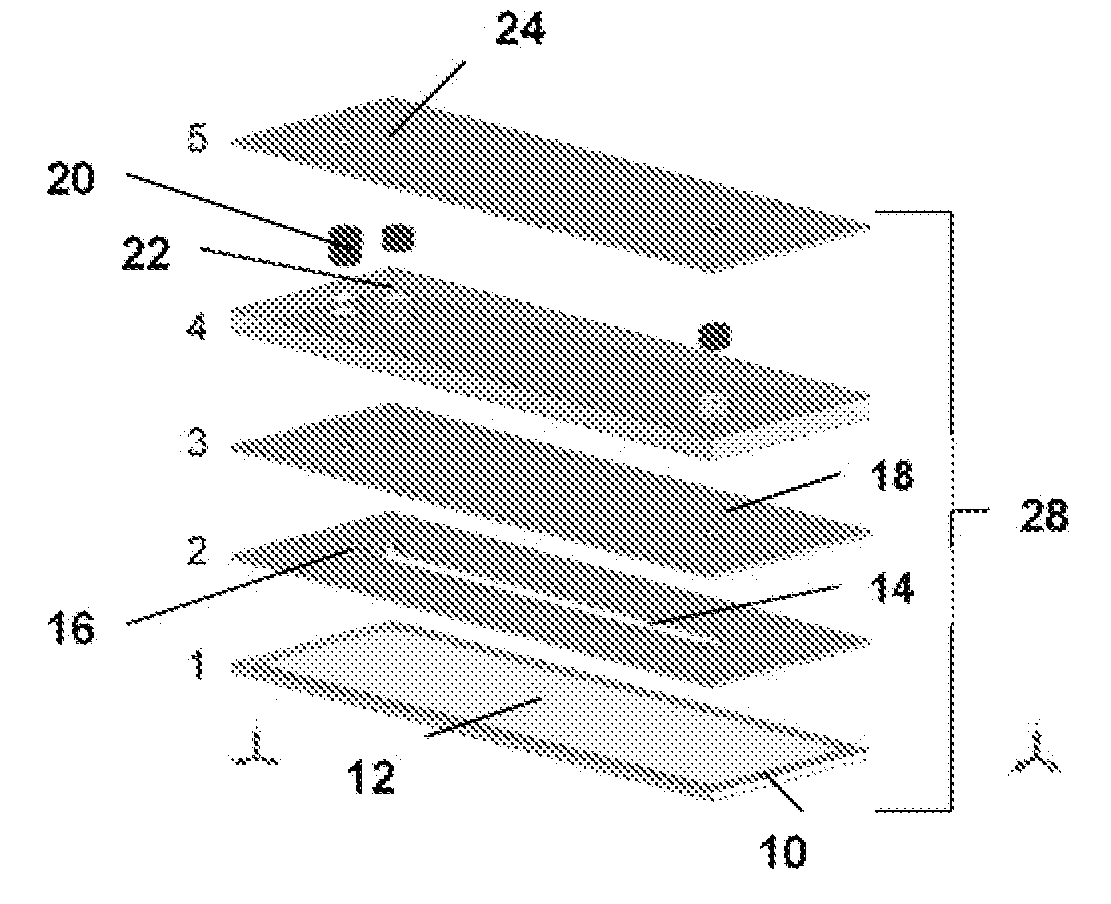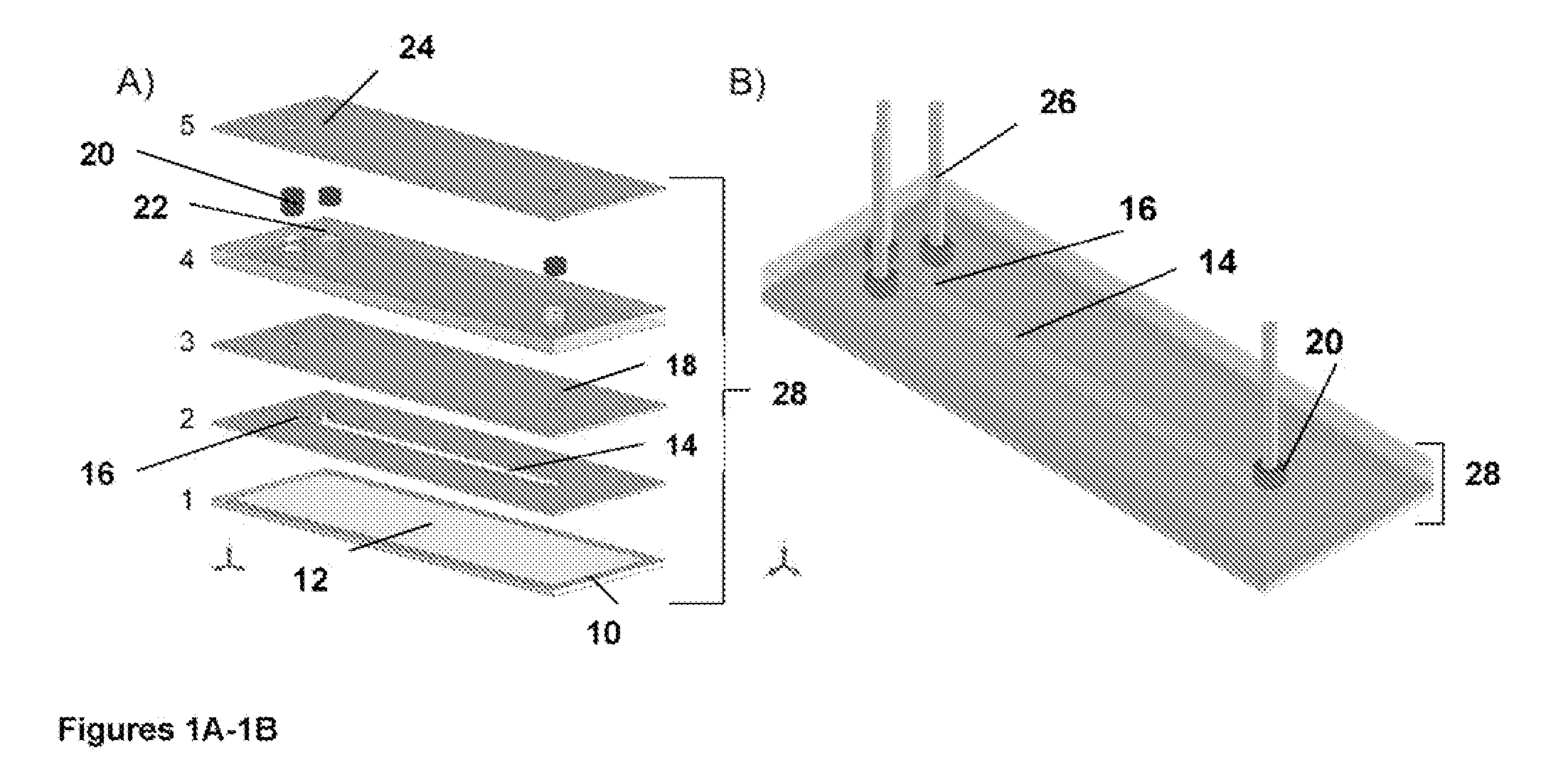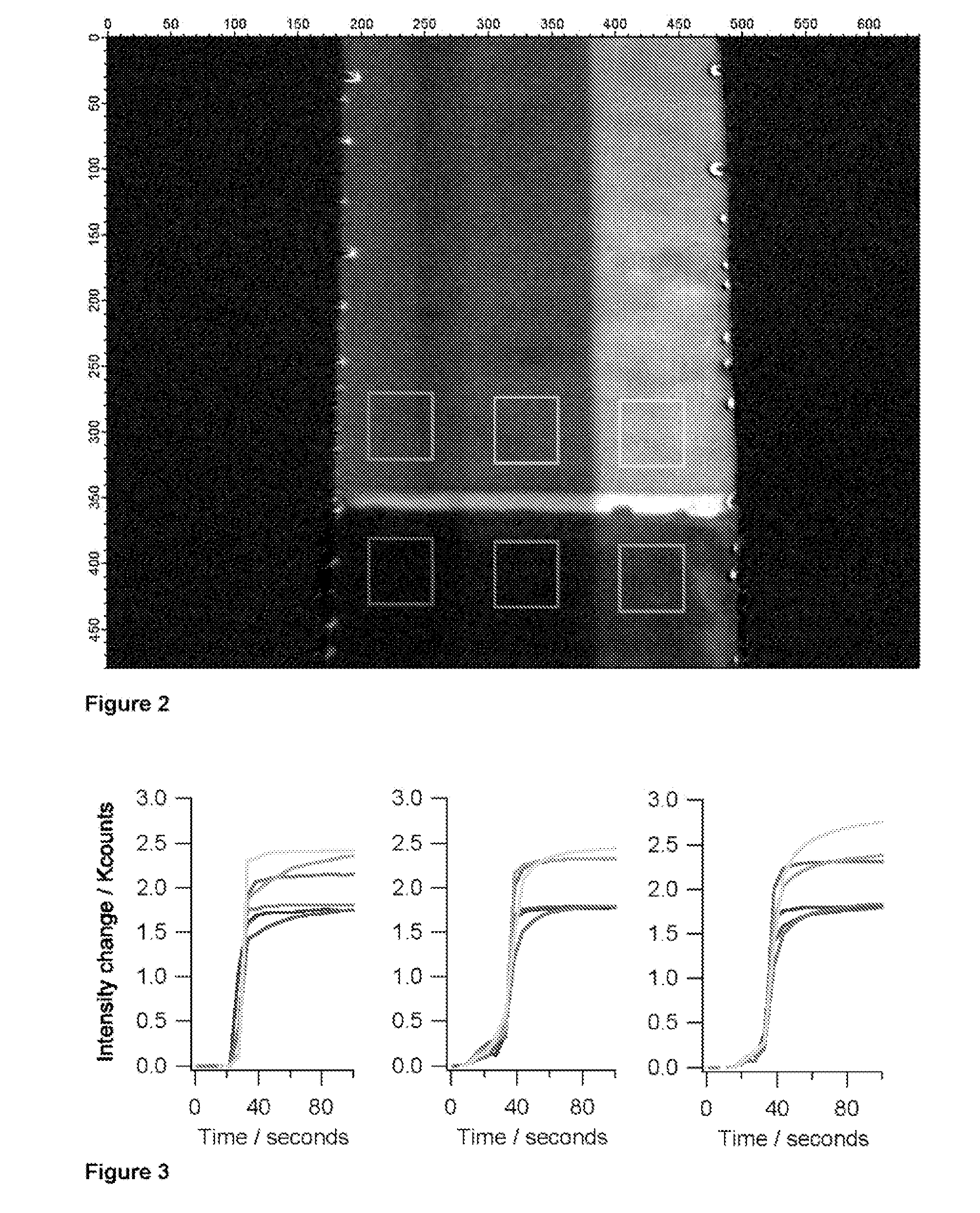Microfluidic assay system with dispersion monitoring
a microfluidic assay and monitoring technology, applied in the field of microfluidic assay systems with dispersion monitoring, can solve the problems of difficult to achieve in microfluidic devices, limited etc., to improve the quality and reliability of data, reduce or correct sources of errors, and improve the accuracy of quantitative determinations using microfluidic devices
- Summary
- Abstract
- Description
- Claims
- Application Information
AI Technical Summary
Benefits of technology
Problems solved by technology
Method used
Image
Examples
example 1
Biosensor Operation
[0079]SPR imaging apparatus and the microfluidic devices have traditionally been used to conduct small-molecule immunoassays. Note that while this describes a specific assay format, other formats are compatible with the techniques disclosed herein, such as direct detection (capture molecule on surface, binding event between capture molecule and analyte detected directly), sandwich immunoassay formats, etc. However, since our research is focused on using SPR imaging as the detection methodology, and since our targets of interest are small molecules, and because SPR does not typically have adequate sensitivity to directly detect binding of small molecules, an indirect detection method has been used instead. This has been accomplished by mixing an antibody to the analyte of interest into a buffer solution containing the analyte, then flowing the mixture through the microfluidic device and over the sensor functionalized with an analogue of the analyte. Antibody molecu...
example 2
Pulsed Sample Injection
[0085]A simple microfluidic device layout that enables the generation of a bolus or pulse of a sample and the delivery of that pulse into a channel that is previously filled with a carrier solution involves injection of sample at the upstream end. By adding a small amount of salt (or some other substance that changes the refractive index of the sample relative to the carrier fluid) via an orthogonal injection channel, SPR provides the ability to readily monitor the location and distribution of the pulse as it traverses the imaging area. By dividing the detector area into non-binding and binding areas, and by including a molecule in the sample that will specifically adsorb to the binding area, it is possible to monitor the accumulation of the adsorbate and correlate that to the distribution and other properties of each sample pulse.
[0086]The lower (upstream) two-thirds of the channel surface have been treated with a PEG-terminated thiol, while the upper third o...
example 3
Assay Calibration for Quantitative Analysis
[0087]Device calibration is essential for a point-of-care diagnostic instrument to provide valid quantitative data. Precise and accurate knowledge of fluid volumes delivered across the sensor surface, solute concentrations, flow rates, solute distribution within and across the channel and dispersion factors is required for quantitating an assay. Solutions with added standards and controls for surface fouling and other effects may also be needed. This latter point is one of the important rationales for having separate fluid inlets into a common channel, that is, to provide for run-time controls and calibrants necessary for quantitative determination. Implementing such controls imposes a strict condition on the ability to make valid comparisons among the sensor responses in each separate stream.
PUM
 Login to View More
Login to View More Abstract
Description
Claims
Application Information
 Login to View More
Login to View More - R&D
- Intellectual Property
- Life Sciences
- Materials
- Tech Scout
- Unparalleled Data Quality
- Higher Quality Content
- 60% Fewer Hallucinations
Browse by: Latest US Patents, China's latest patents, Technical Efficacy Thesaurus, Application Domain, Technology Topic, Popular Technical Reports.
© 2025 PatSnap. All rights reserved.Legal|Privacy policy|Modern Slavery Act Transparency Statement|Sitemap|About US| Contact US: help@patsnap.com



